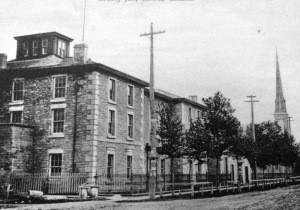MARY CAMPBELL AND CANADA’S NEW DEATH PENALTY
“Canada’s New Death Penalty” was the provocative title of Mary Campbell’s presentation on Sunday, October 21, 2018, as part 1 of the Eglinton St. George’s Compassionate Justice Speaker Series.
Campbell, retired director general Corrections and Criminal Justice, began her talk by recognizing that although the death penalty still exists in some 50 countries worldwide, it was abolished in Canada in 1976, and a motion to restore it was defeated in 1987. What replaced the death sentence for first-degree murder was life imprisonment with no chance of parole for 25 years, and a sentence of between 10 and 15 years for second-degree murder. However, if prisoners merely remain in prison with no effort to rehabilitate them until they die —well, that’s a death sentence.
Unlike the case in the United States, where consecutive life sentences are allowed and people can serve what Campbell refers to as “eight life sentences plus 200 years,” life sentences in Canada are served concurrently. However, people with more than one life sentence “get to know maximum security very well,” and may well have to have a “conversion to sainthood” to get parole. (Note that there has been the odd exception: in 2017, for example, triple murderer Douglas Garland was sentenced to life in prison with no chance of parole for 75 years.)
In 2011, Stephen Harper’s Conservative Government managed to get around the fact that Canadian courts frown on consecutive death penalties by making parole ineligibility consecutive. This could mean, for example, 75 years of parole ineligibility for a prisoner serving 3 concurrent life sentences. When the Liberals came to power in 2015, they undertook to abolish what Campbell calls “the new death penalty,” but didn’t. So, effectively, people are given a “living death sentence.”
Campbell laments the loss of the “faint hope” clause, which previously allowed prisoners sentenced to life imprisonment with a parole eligibility period of greater than 15 years to apply for parole once they had served 15 years. “The program worked,” says Campbell. “There were no disasters.”
Campbell’s take-away message: We should not be asking what an offender deserves. The correct question is what we as Canadians deserve. Do we want to be the most unforgiving? Are we prepared to kill people in the name of the law? We should allow criminals the chance of redemption, of reaching some personal awareness that what they did was profoundly wrong.

